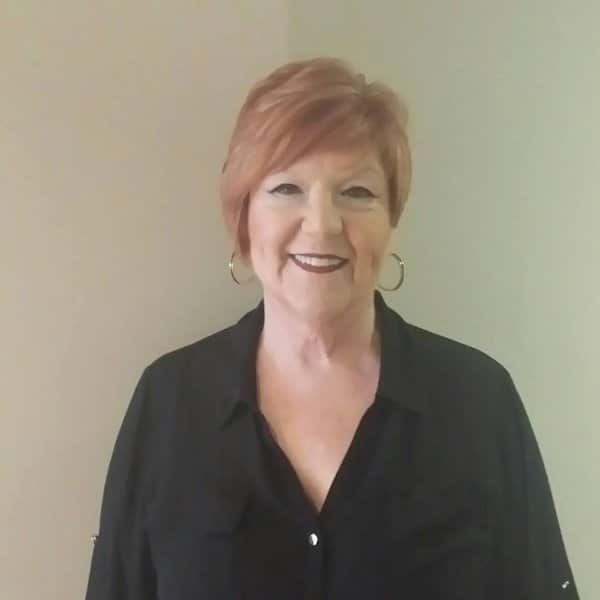You hear this phrase, “the art of the sales letter” and it sounds like there’s a magic formula, or that it can only be done by a guru. And yet, all the cooks are pulling their ingredients from the same shelf in the kitchen.
I eat a lot of Blue Apron, and what I like about it is that anyone can put together a chef-prepared meal. Sure, somewhere a culinary master put together the recipe and specified the portions of ingredients, but you’re still the cook. We don’t need everyone to be the chef. We just need to know what the chef is using to make the meal, and we can reproduce it without having to go to culinary school.
The sales letter is like that. Sooner or later we all have to write one. There are several kinds, of course—the mass email (identical for every recipient), the autoresponder series (a whole sequence of letters sent in a specific order), and the personal 1:1 sales email. They’re like the 5 sauces. You learn these, and you’ve got 90% of French cuisine licked.
The latter type—the 1:1 sales email—is what I’m going to outline, since it’s the basis of ALL the other sauces. Learn this, and you’re 90% of the way to the 90%.
You won’t use every ingredient in this list, any more than you’d dump your whole spice rack into a stew. But a lot of these ingredients you’ll use every time. They become your salt, pepper, and cumin (you DO put cumin in everything, DON’T you?). You’ll also personalize it. You’ll add the splash of this or flavor of that, that makes it your family recipe, your secret sauce. That’s when you’re the chef. So here’s a quick rundown that is the basis of every ‘secret sauce’:
Sales Letter Ingredient List
Subject Line. A whole topic in and of itself. Some quick tips are—be specific (don’t hint or be coy–statistically people hate that and it lowers your open rate) and avoid making it a question (that feels like a setup). Include a verb, and stick to imperatives (Do x) or declaratives (X is so).
Eyebrow copy (preview text). Modern email software lets them see a preview of the first sentence or two. In a sales email with a headline, this is two sentences that go BEFORE the headline. In a more personal email, this goes at the top BEFORE the Dear ____. – e.g. “If you lack full visibility on your freight/shipping…” One way to create killer preview text on personal emails (vs. mass emails) is include something specific to the target. E.g. “Congrats on getting the Highcloth Award for best oil drilling platform.” Do two minutes of stalking for an email it takes you two seconds to send. Checking the recipients LinkedIn profile or searching news.google.com for their name or company name (in quotes) can reveal a lot.
Attention Grabber. In a personal letter, it’s NOT a big overblown headline. In a traditional headline sales email, it is the headline. Headlines, like subject lines, is a whole topic in itself, but follow the same rules for headlines.
The Lead In. Summarizes what this letter is about. It’s got to be short—resist the temptation to preamble. It can be as simple as “We’re an executive travel agency that ensures optimal flight times and travel conditions for when the C-suite or sales team needs to arrive fresh and prepared. We’re looking to become your preferred vendor for executive travel.” Imagine a box drawn around this part of the letter. In a personal feeling letter, you might just add slightly extra spacing around it.
The Sales Argument (premise). Problem/solution. Sometimes you may present multiple problem/solution pairs.
The Promise (the possibility). This is part of the sales argument/premise. It’s a statement of what big thing is possible. State the ideal scenario as what you’re holding out. Don’t qualify and don’t worry about the fine print—it’s a sales letter, not a contract. Here, you’re addressing their motive for doing what you want, and influencing them to take stock of that motive. You’re also instilling hope—the most powerful force in why we make decisions. It beats fear, so instill hope as your better, kinder methodology.
Proof it Works (testimonial, case study, demonstrative stats, company credentials). No gimmicks—prove claims, promises, benefits with sound data, customer experiences, or other anecdotal evidence. You don’t need to make statements about “no risk to you!” if you provide substantive and specific proof. If you have no proof, position yourself as an authority or your company as a leader. You don’t have to say “we’re the industry leader” if you can demonstrate it. E.g. “We won #1 x in y magazine.” Your goal is to reduce anxiety about making a wrong choice. As with The Promise, you’re eradicating fear. If you can’t point to your authority, you can tell a story. Stories are the universal language for seeing ourselves vicariously in someone else’s shoes. E.g. “A major midwestern firm found that for every manual process it eliminated, it put an average of 35-minutes back into the busy day of their most pivotal employees.”
Unique Selling Proposition (value prop). Yes, but why THIS company (our company) in particular? Make it strong—not just ‘we’re really really good’. What does the end user most value in US (that the competition finds hard to replicate)?
Demand for Action (CTA). Frame it as value for THEM. Think of both the ultimate and immediate value, so you can convey a clear process. E.g. have a preliminary conversation… that ultimately results in greater visibility and cost savings… (they need to understand how what happens next is a move toward something they really want). Don’t bury the call to action; it’s frustrating to not be able to tell what you want.
Penalty. If you use this ingredient, use it judiciously. You don’t want to belittle or mock the recipient. But you can hold out an implied penalty (for them) for not doing what you’re asking. E.g. “I’ve got six of these, and then they’re gone.” or “Ask yourself, what does lost productivity cost you over the course of one month?” This isn’t using fear so much as being sanguine about the real costs of less optimal decisions. You’re still offering to replace an unpleasant experience with one that’s a breath of fresh air.
Value Add (premium). Often a ticking clock (timed offer) is not appropriate for a long sales cycle. But you can offer/hold-out/provide a core content piece (white paper, executive briefing, industry report…) that adds value to the conversation from the very start. Offering a value add can mean that a follow-up email can be to get feedback on the value add, while briefly reprising your original email.
Next Steps. This is similar to the Demand for Action, except you’re not leaving the ball in their court. Not “call me if…” or “let me know when…” but “I’ll follow up with you next week about…” or “I’ll call Monday…” or even “I know you’re busy, so if we don’t get an appointment locked down by ___, I’ll follow up with you on ____.” The goal is to not be passive and make followups turn into nagging intrusions. Instead, let them know the lay of the land—you’re going to be following up.
Sign Off. Experiment with being personal. Dorky but crisp is better than dry/boring or neurotic/wordy. E.g. “Looking forward to clinking glasses over improved productivity!”
Postscript. The PS affords you a very personal final connection point. If they made it through a sales letter, they deserve it. E.g. “PS, I’m hoping your Christmas plans are shaping up to be warm and pleasant!” You can use a PPS if you want. The rule is be personal. Often people scroll to the bottom and read the signature line (and PS) first! So make it warm and authentically who you are as a person.
Sales Letter Cooking Tips
Long letters win: It’s counterintuitive, but long sales letters convert better than short ones. Short sales letters feel like SPAM. Long ones, all other things being equal, feel like a substantive communication. They get forwarded more to the right person or colleagues. This is similar to the phenomenon that longer blog posts (1200 words +) tend to get shared more often than shorter ones (300-750 words), because people prefer to share substantive content to their peers.
Subheadlines: If your sales letter is going to be long, break it up with bold one-liners, so that a person can skim. These subheadlines need to be complete sentences, understandable without reading surrounding text. Likewise, if one skims and reads ONLY headlines/subheadlines, taken together they needs to be a coherent summary of your letter (without reading any other text). The headlines are the ‘short version’ of what the letter is saying.
Come off with gravitas: Not airs, but not like a low level functionary.
Avoid cheese: It’s great for scrambled eggs, but keep it out of your sales letter omelette. Try not to use typical SPAM triggers like “free consultation” or “no risk guarantee”.
Avoid jargon: For one thing, it can break reading flow if they have to think about a word. For another, it’s less likely to get forwarded to a colleague or the correct recipient, if the recipient doesn’t fully understand it (felt risk is too great).
Style: Be brisk, not boring. If your copy tends to be mechanical and formal, putting in every “that” and “wherefore”, get a professional copywriter to write smoothly flowing text that’s not bland. If you use headlines, they’ll get read first (people skim first, decide if they’re going to read, and then zoom in to the non-bolded text), so make your headlines gripping and hypnotic. Use verbs a lot, adjectives seldom.
Recontextualize: Read something about writing persuasively that isn’t about sales letters. You can learn a LOT about writing sales letters from CopyBlogger’s great article on the ingredients of powerful sales landing pages.
That’s it. There are probably one or two other exotic ingredients—charts and graphs, special tracking doohickeys, but using these ingredients properly will let you intuitively create a serviceable sauce—a functional, exciting sales letter that ups your conversion rate and gets you the conversations you want with prospects. Once you start using these ingredients and tips for your sales letters, you’ll be cooking with gas.







